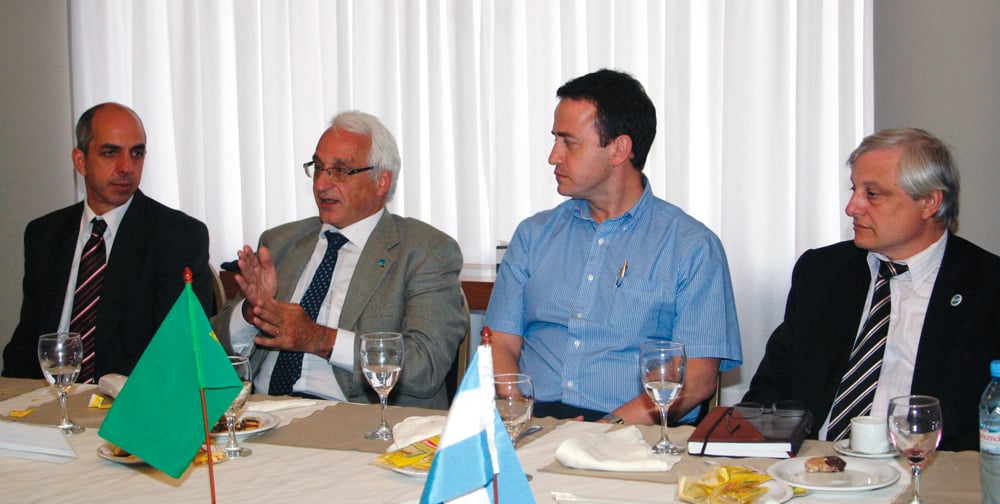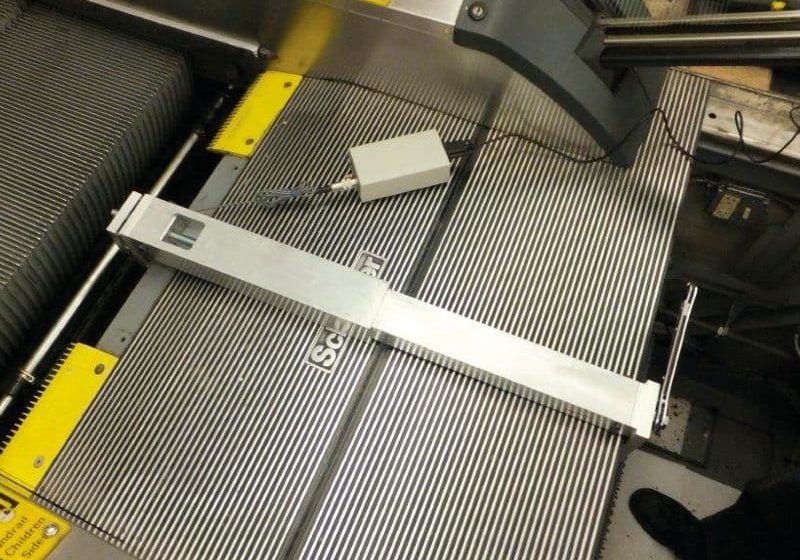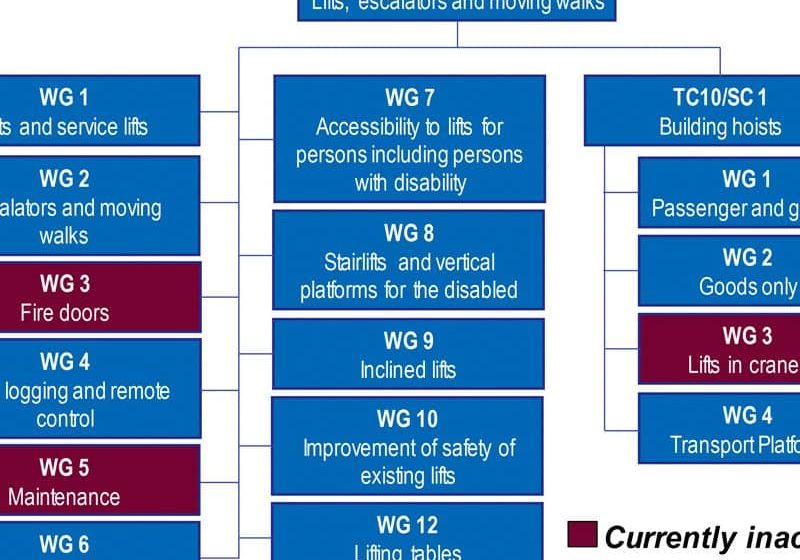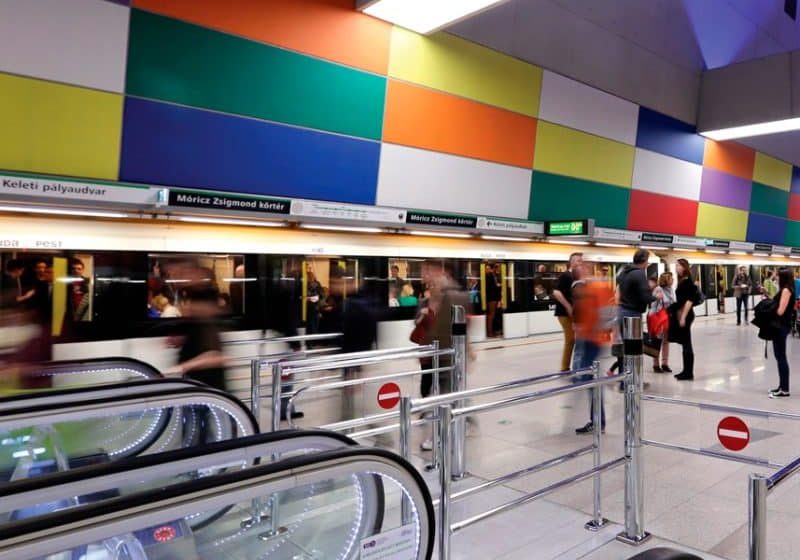AEM Meets in Buenos Aires
May 1, 2015

Mercosur Elevator Association discusses plans for South American markets.
Brazilian members of the Asociación de Elevadores del Mercosur (AEM) traveled to Buenos Aires to meet with their Argentine peers and discuss common issues on November 17, 2014. The one-day meeting was intense, and participants were very satisfied with the exchange of ideas and experiences. In the morning, the group visited the Instituto Nacional de Tecnología Industrial (INTI) test lab to observe testing for elevator locks, safety devices, buffers and electromagnetic interferences. Technicians explained the different procedures to eagerly interested visitors. In Brazil, there are no labs to certify components.
There was a dynamic and fruitful exchange of comments on different situations experienced in the Argentine and Brazilian elevator industries following a lunch served at the headquarters of the Asociación de Industriales Metalúrgicos de la República Argentina (ADIMRA).
The one-day meeting was intense, and participants were very satisfied with the exchange of ideas and experiences.
The group discussed 29 issues the Brazilian delegation had previously submitted related to the elevator sector in Argentina. In addition, a long series of practical questions and answers on everyday situations fluently arose on both sides. Finally, participants suggested the implementation of complementary production activities on the Latin American market, and a possible future meeting was scheduled for May/June 2015.
Brazilian Presentation
Fabio Becker Aranha, president of AEM, lectured on “The Situation of the Brazilian Market: Difficulties and Opportunities,” in which he gave reasons for the market concentration of multinational companies. They include the opportunity to apply the standards to existent elevators (already enforced in Brazil but not in Argentina). Aranha sees elevator modernization as a great job resource for small and medium-sized companies, because specialized and tailor-made services are needed for such projects.
There was also a presentation on the European Lift Association that is promoting EN 81-80 Safety Norm for Existing Lifts enforcement around the world and particularly in Europe. There, modernizations increased, and accidents decreased. Thus, safety in existent elevators is seen to contribute (however indirectly) to energy savings.
Argentine Presentation
Some local entities projected their institutional videos: the Elevator Safety Committee and Federación de Asociaciones y Cámaras de Ascensores de la República Argentina emphasized safety campaigns, and Cámara Argentina de Fabricantes de Ascensores y sus Componentes showed its film on energy efficiency in elevators and its impact on the environment.
History
AEM was created in 2013 to defend industrialization and the interests of independent elevator companies within the Mercosur commercial bloc, which is made up of Argentina, Brazil, Paraguay, Uruguay and Venezuela, in addition to several associate countries. Companies based in Argentina and Brazil are joining their efforts to compete in better conditions within their respective markets.
Opposite Situations
AEM is made up of three recently established Brazilian elevator associations. For this reason, individual companies are also accepted into the entity. Its Argentine counterpart, however, is comprised mostly of aged associations, and no separate companies take part.
Brazil is suffering a severe deindustrialization of its independent vertical transportation sector: just 10-15% of new installations there are carried out by national companies. Even though Brazil’s market is big, there is a great concentration of multinational companies in the sector.
The Argentine situation is just the opposite: 85% of installations are in the hands of independent companies; local component production is very strong, and the most venerable association, 56-year-old Cámara de Ascensores y Afines, is followed by several other long-existent organizations. Consequently, Brazilians consider Argentina an example to imitate in the aspects of associations, production, test laboratories, education and even trade magazines. It is also important to point out that foreign equipment can be imported into Brazil with no restrictions. Additionally, Brazil is a member of BRICS (Brazil, Russia, India, China and South Africa), whereas in Argentina, at present, imports are rigorously restricted in all fields. AEM would also place the Brazilian associations and companies on a stronger status in talks with governmental authorities.
Get more of Elevator World. Sign up for our free e-newsletter.









